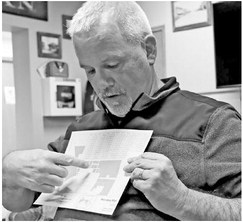What is driving village of Gilman TID effort?


Star News
Editorials
Village of Gilman leaders are hoping using a powerful economic development tool will spur growth, but they need to take a hard look to determine if TID will bring value to the village or just put tax money in the pockets of the consultants paid to set it up.
At their Feb. 8 meeting members of the Gilman Village Board received a proposal from MSA, a consulting and engineering firm, about creating a new tax incremental district (TID) for the village.
TIDs are powerful economic development tools and are one of the few tools available at a local level. When used appropriately, they can serve as a springboard to development and growth, not only within that municipality, but throughout the entire region. When poorly planned or overly broad in scope they can fall flat on their potential and be a sinkhole of expenses with little to show for it at the end of the day.
A TID allows municipalities to pay for infrastructure upgrades such as extension of roads, utilities, land purchases or offering development incentives to assist in a development projects. These often require borrowing by the municipalities with the money to be repaid through capturing the taxes on improvements within the district that would otherwise go to the county, technical college and local school district. Local property taxes collected on parcels are generally split between these overlying taxing entities. Within a TID the municipalities keep the money on improvements over the base level.
There are examples of wildly successful TIDs, such as the one created for the construction of the Marathon Cheese plant in the city of Medford. In that case, the area to be developed was largely vacant and the anchor business had already committed to bring a large development there. While this sort of success story is the dream, there are many more examples of TIDs that either outright failed by not paying off the improvement expenses, or which were overhyped and others which were the victims of poor economic timing.
The village of Gilman has had past experience with a TID that did not live up to its potential and should be hesitant before committing to establishing a new one with a retail store as its primary anchor business. The village, along with the overlying taxing districts, must look long and hard at the potential benefits of the TID to the economic health of the region and compare that to impacts to the other taxing entities as well as to the ongoing auditing and administrative costs of the TID.
TIDs are powerful tools, but work best when they are clearly focused with specific, attainable goals. As with any other tool there needs to be a realistic cost versus benefits analysis to determine if the tool is the right one to be used for the job.




